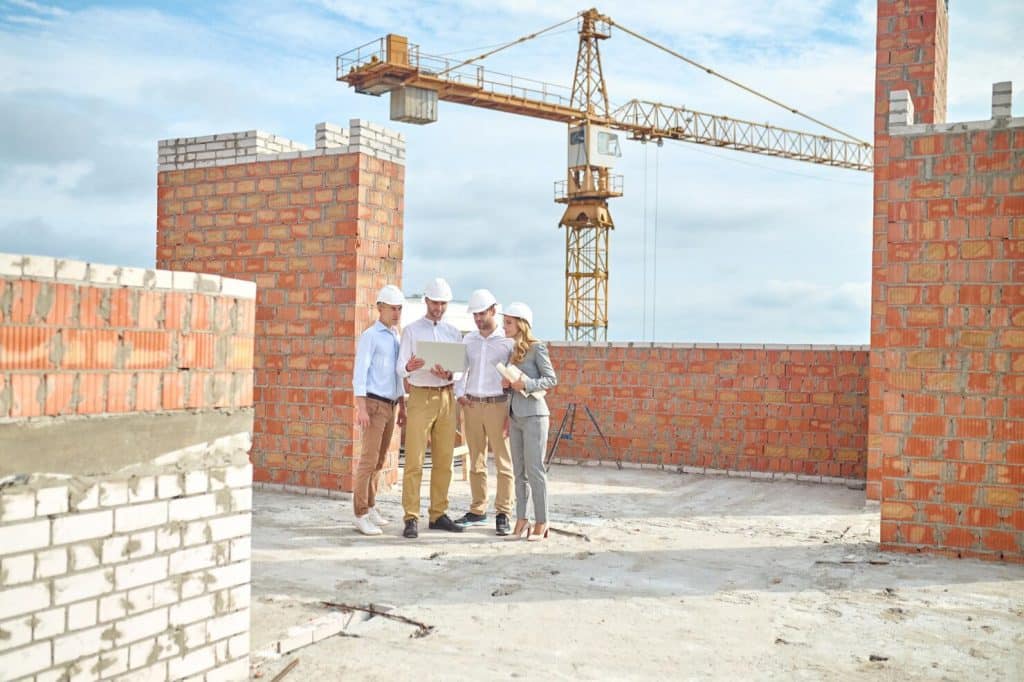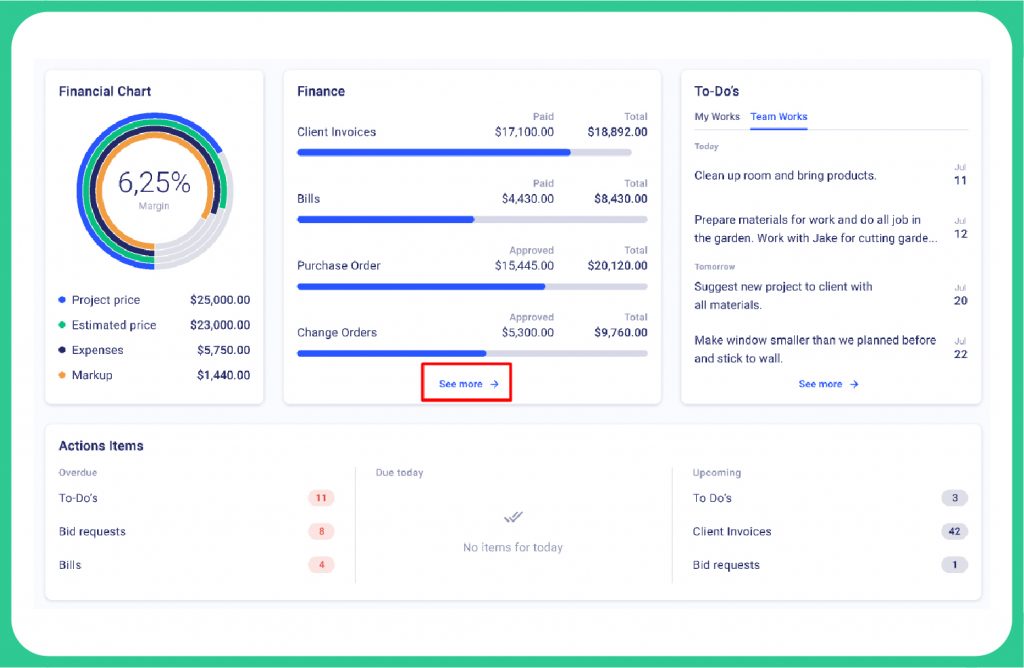Retainage in Construction: Security Measure for Owners, But What for Contractors?

The construction industry is a risk-intensive business, where owners have to make sure that their investment is secure while contractors are trying to maximize their profit margins.
Considering the sensitive nature of construction projects, where each party has its own vested interests, each of them also tries to add more layers of security for their benefit.
One such measure is the use of a retainage fee, which is a percentage of the contract amount that an owner withholds from a contractor until the completion of the project. The purpose of retainage is to ensure contractors fulfill all their contractual obligations, including timely completion and quality work.
From an owner’s perspective, retainage in construction serves as a form of security against potential risks such as contractor default or incomplete work. Meanwhile, contractors can fairly argue that retainage poses a significant financial burden and cash flow issues for them.
After all, who said contractors have lower risks of underpayment and they don’t need their own security measures from owners?
This article discusses construction retainage, where it comes from, whether it is still relevant in today’s construction industry or maybe there are better ways to secure both owner’s & contractors’ interests.

What Does Retainage Mean? A Detailed Definition
Retainage fee, we can also call it contract retention or holdback, is usually 5-10% of the contract value (but can vary from project to project, from country to country and state to state) that an owner holds or retains from the general contractor’s payment until the project is substantially complete.
The word “substantially” is the key word here since it indicates that retainage is not released upon completion of the project but only when it reaches a certain level of completion defined in the contract.
Usually, substantial completion is when the project is ready for its intended use or occupancy, even though minor work items may still need to be completed. This largely depends on how the contract for the specific project defines substantial completion.
It’s of the utmost importance to ensure no ambiguity in the contract language when it comes to defining what is meant by “substantial completion,” as it could result in disputes between owners and contractors, resulting in receiving your complete payment, including construction retainage, later than expected (or not receiving it at all, pardon our pessimism).
Here are some nuances you should know about retainage.
A quick explanation of terminology before we move forward:
Quite often, you will see the terms of construction retainage and construction retention used interchangeably. While retainage refers directly to the sum of money withheld, retention is more about the process of withholding that money. In this article, we use both terms to refer to the same thing – withheld money.
Retainage Is Withheld from Each Progressive Payment
If your retention of payment is 10% ($10,000 from a $100,000 total contract), then 10% will be withheld from each progressive payment – not a total of $10,000 from your last payment or at the very beginning of the project. This is an important distinction that contractors should keep in mind to avoid cash flow issues during the project.
You Receive Retainage in Construction at the End of the Project, Usually

Typically, contact retention is released, and the general contractor receives their complete payment at the end of the project. However, no law or rule says it has to be done this way. This is a subject of negotiation between the owner and contractor and can be determined by the contract itself.
Some contracts may have a specific milestone or percentage of completion where retainage is released, while others may hold it until final completion.
You Will Probably Be More Affected by Construction Retainage as a Subcontractor Than As a General Contractor

There is a chain effect when it comes to construction retainage. Usually, the owner holds back money from the general contractor, who in turn holds back money from their subcontractors and so on. And since subcontractors usually perform only a specific part of the project, their work is considered completed far before the general contractor’s work is completed.
As a result, subcontractors may wait longer to receive their retainage, especially if their part of the project is completed in the first stages of the project. Meanwhile, even if they aren’t yet paid for their completed work, subcontractors are still expected to pay their workers and suppliers on time, make payroll, and cover their other expenses.
This can create a significant financial burden for subcontractors, who may struggle to maintain positive cash flow throughout the project.
Retainage in Construction Is Not Always Mandatory
While retainage is a common practice in the construction industry, it’s not always mandatory. Some states and countries have laws that limit or prohibit the use of retainage, while others leave it up to the owner and contractor to negotiate.
The use of retainage also depends on the type of project and its complexity. For example, smaller residential projects may not include retainage, while larger commercial or public projects usually do.
The % of Retainage Is Not Set in Stone
Though a typical retainage percentage is 5-10%, this can vary depending on the project and jurisdiction. Certain states set upper limits on retainage, such as “no more than 5%” or “no more than 10%”, while others leave it up to the parties involved to negotiate the percentage.
Carefully studying local and federal laws and regulations, as well as understanding industry standards, can help contractors protect themselves from unreasonably high retainage percentages.

Why Retainage in Construction Is a Threat to Contractors
As one of the industries where maintaining positive cash flow is already a challenge for constructors because of the long payment cycles, withholding a specific sum of money from each payment can result in an even more significant financial burden.
- Retainage can be higher than the contractor’s profit margin, which means the contractor works with no financial gain for the whole project duration. Especially if the project takes longer than anticipated or is initially a lengthy project, contractors should always have free cash in reserve to fund their operations until they get paid. That’s not always possible or easy to achieve.
- There are frequent retainage abuses. Some owners or general contractors may try to hold back retainage as long as possible, even after the project is completed and all necessary approvals have been obtained. This puts additional strain on the contractor’s cash flow and can be seen as an unfair business practice.
- In some cases, owners try to avoid paying the retainage altogether, which means contractors have to pursue legal action to receive the money they are entitled to. This can result in additional time and resources spent on litigation, which further affects cash flow and profit margins.
Construction Retainage Based On Your Location
Except for the countries or states where having a retainage in construction is obligatory, you are free to negotiate its absence or some other, safer alternative with the individual entity you do business with.
To make you informed and ready for discussion, we provide you with an overview of the retainage specifics by location.
Retainage Fee in the USA
Retainage is a common practice in many states across the United States. But, there are different rules depending on the location and project type.
- Retainage is eliminated by the federal government.
- All 50 states allow for construction retainage to be withheld from contractors for state/county or municipal public work projects.
- All private/commercial construction projects are subject to retainage in 49 states, except for New Mexico, which enacted sweeping reform legislation in 2007 that prohibits retainage for most public and private construction projects.
Among private projects, the rules and regulations again vary from state to state.
- Many states in the US are required by law to reduce the maximum rate of retainage to 5% and even less.
- Several states, including Missouri, Kansas, and Tennessee, allow construction project stakeholders to have substitute security on private projects.
- Vermont’s enacted legislation of 2018 prohibits withholding construction retainage from pure material suppliers.
- There are also states that don’t allow owners to withhold retainage in construction from contractors if 50% of the project is already completed.
Note! As state regulations frequently change, it is highly recommended that contractors consult local laws and regulations before signing a contract, verifying any information about retainage provided by this article for the time of reading.
This article mostly relies on the 2021 publication of the Foundation of the American Subcontractors Association, “Retainage Law in 50 States (2021),” which reflects some of the changes that took place since their last publication in 2018.
How Are General Contractors Protected From Not Receiving Construction Retainage in the USA?
In parallel to having the right to keep retainage, project owners have an obligation to pay the retainage back if contractors, subcontractors, or material suppliers fulfill the contract terms – within a reasonable period of time – and if they have no outstanding issues at that point.
In case contractors discover the retainage withheld from them is not paid to them after all contract terms are fulfilled from their side, they should act promptly to file a claim for retainage due.

Mechanics Liens As a GC Security Measure in Private Construction Projects
A mechanics lien, or construction lien, as it is sometimes called, is a legal claim on any property that has been improved by a general contractor or material supplier who has not been paid for their work.
This lien is attached to the property, granting the unpaid party a security interest in the property. So, if the claim is not settled and the owner doesn’t pay the contractor, the lien may lead to foreclosure of the property, forcing the owner to sell it and satisfy unpaid GC’s debt.
That’s one of the most effective methods of securing your retainage in construction, as liens put a big financial pressure on the property owner, so they will likely go to great lengths to avoid the potential consequences of a mechanics lien.
However, to effectively utilize mechanics lien, contractors need to follow strict regulations and deadlines established by each state.
- Contractors have a small window of time to file a mechanics lien, and it’s not always the same as the retainage due. If your project has extended timelines and your retainage is due after the lien filing deadline, the lien can simply use its power to secure the whole amount of payment after the retainage due date. So, contractors need to follow lien filing rules and file on time strictly.
- A preliminary notice should be provided by general contractors or suppliers at the start of the project to be able to file a lien in case anything goes wrong. This official notice has a statutory deadline, before which contractors should notify the owner that the other party is reserving their right to file a mechanic’s lien to them if they are not paid. If this notice is not sent or is sent late, the entire lien claim may be invalid.
Payment Bond Claims As a GC Security Measure in Public Construction Projects
While mechanics lien is only applicable to private projects, payment bond claims are used as security instruments in public construction projects. As the US government can’t tolerate claims against its interest in the land, a bond claim is secured by not the property interest but a payment bond.
So, a payment bond is a surety bond secured by a surety company that has guaranteed finances to secure the value of the project. If GC, subcontractor or material supplier are not paid after the successful completion of the project, they make a claim for payment against the payment bond and get their retainage fee back from the payment bond securities.
- Here, again, a preliminary notice should be shared to secure GC’s right to file a claim later. The deadlines here are also statutory and differ from state to state, so GCs are advised to check the rules and regulations of the state they’re working in.
- Further, you fill in the bond claim, carefully following the rules of your state and ensuring no error in the paperwork. To avoid any issues, it’s recommended to consult with a legal professional since bond claims can be quite complicated.
- The most time-consuming stage is actually collecting your payment. To do this, you should be very responsive to the surety company that will contact you and attempt to reach a resolution after receiving your claim. A surety company will typically request supporting evidence or a sworn statement if the retention remains unpaid. So, it’s important to keep all documentation supporting your claim in a safe place.
Retainage Fee in Australia
Withdrawing retainage in construction is not forbidden in Australia, so owners have all rights to withhold retention. According to the standards, the construction retention range is 5-10% of the general contract price and it’s largely dependent on the type of construction contract signed.
There is a retention clause in construction contracts that describes the amount that is retained, along with when and how will this withheld amount be paid back to the contractor.
If a construction project value is over $20 million, construction retainage should be put in a trust fund, and the head contractor is obliged to maintain the trust fund and give out annual account statements for Fair Trading.
How Are General Contractors Protected From Not Receiving Construction Retainage in Australia?
There is a defects liability period clause – a period of 3-12 months after the reference date of the final payment or the date specified in the construction contract. During this time, a building expert inspects the property and assesses the quality of the contractor’s work. They determine if any defects need to be improved before final payment is made.
If, after the inspection, no defects are found or if the defects have been corrected within the allowed time frame, then the owner must release withheld retainage fees.
In case of any dispute, you can refer to a qualified person, known as an adjudicator, to initiate the alternative dispute resolution process, which usually falls outside of the court system and, therefore, is quicker and cheaper compared to litigation for resolving building disputes.
To start this process, you should fill in the adjudication application with the Register of the Queensland Building Construction Commission – strictly following the provided timeframes.
Final Thoughts
A Comprehensive Construction Project Management Software Can Help With Detailed Recordings of All Project Details and Secure Your Retainage Fee
Though indirectly, construction project management software can help secure your retainage fee. With detailed and up-to-date contract records stored in one place, you have all the necessary information at hand when it comes to filing a lien or bond claim.
A construction management software records every project update – from the confirmed proposal with your customer to the final completion of the project – including schedule history, all invoices and their statuses, etc.
When you have a detailed record of the project, you can easily prove that your work was done correctly and within contract terms to receive your retainage fee.
Buildern is an all-in-one platform for every construction module you can think of. It syncs with Xero or QuickBooks and records all your transactions in one source. It also stores every interaction between you and suppliers by having purchase orders and bills recorded in one place and tracks when bills are due so nothing is missed.

Integrating Buildern into your construction process means that you are always armed with accurate and up-to-date information, enabling you to protect your retainage fee in case of any dispute easily and ensuring the smooth running of your construction projects.



